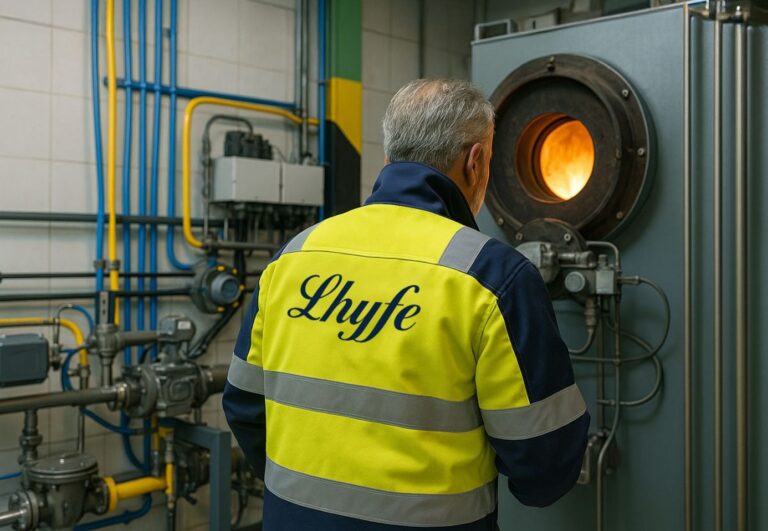Lhyfe, a France-based green hydrogen producer, has successfully conducted combustion tests using 100% renewable hydrogen in the ceramics sector of Spain’s Valencia region—signaling a potentially scalable pathway to decarbonize one of the country’s most energy-intensive industries.
The trial, Lhyfe’s first hydrogen combustion deployment, involved a three-tonne green hydrogen delivery over three weeks, produced at its Bessières facility in Haute-Garonne, France. With a capacity of up to two tonnes per day powered by a 5 MW electrolyzer, the site is one of several Lhyfe is leveraging to meet emerging industrial demand. The hydrogen was transported to Spain using Lhyfe’s fleet of nearly 70 hydrogen bulk containers—one of the largest in Europe.
Spain’s ceramics and frit sectors—concentrated in the Valencia region—depend heavily on natural gas combustion to reach operational temperatures ranging from 400°C to over 1,500°C. Substituting that fuel with green hydrogen, which emits only water vapor when burned, offers a direct decarbonization route for these legacy processes.
The core innovation tested by Lhyfe was a modular “mixing kit” designed to progressively blend hydrogen into existing natural gas flows, ultimately reaching a 100% hydrogen feed. The system, which requires only burner modifications, enables industrial players to conduct incremental fuel-switching trials without full-scale infrastructure overhauls.
While the ceramic sector has emerged as an early testbed, Lhyfe sees broader application potential in other high-heat industries—cement, glass, non-ferrous metals, and steel among them. All share similar temperature requirements and dependence on fossil gas, making them strong candidates for hydrogen-based process heat.
Building a Hydrogen Ecosystem in Spain
The pilot also marks Lhyfe’s first commercial delivery to the Iberian Peninsula—a market it has been strategically entering since launching its Spanish subsidiary in 2022. With offices in Madrid and Barcelona, the company is advancing several production projects, including a 15 MW electrolyzer facility in Vallmoll (Tarragona), slated to produce up to 5 tonnes of hydrogen per day by 2027. That project has secured €14 million in public support via Spain’s H2 Pioneros program and aims to decarbonize chemical industry and mobility use cases.
The country’s broader hydrogen strategy—supported by the Spanish Recovery Plan and European funding mechanisms—includes the deployment of 4 GW of electrolyzer capacity by 2030, positioning Spain as a major player in Europe’s renewable hydrogen supply chain. However, bridging the gap between policy ambition and commercial viability requires practical demonstrations like Lhyfe’s to validate fuel-switching use cases across varied industrial loads.
While three tonnes of hydrogen is far from industrial-scale substitution, the symbolic and technical value of this deployment is significant. It provides proof-of-concept for decarbonizing thermal energy applications—a segment that remains difficult to electrify—and lays the groundwork for replication in other sectors.
Stay updated on the latest in energy! Follow us on LinkedIn, Facebook, and X for real-time news and insights. Don’t miss out on exclusive interviews and webinars—subscribe to our YouTube channel today! Join our community and be part of the conversation shaping the future of energy.





